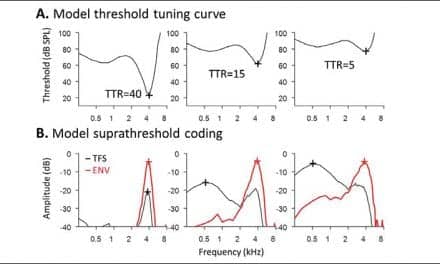Pitch perception is not a skill unique to humans, say scientists from Johns Hopkins University (JHU), where a recent research study reveals that marmosets, considered to be “ancient” monkeys, appear to use auditory cues to distinguish between low and high notes.
The study findings, as outlined in an article in the December 28, 2015 edition of the Proceedings of the National Academy of Sciences (PNAS), indicate that aspects of pitch perception evolved more than 40 million years ago to enable vocal communication and songlike vocalizations.
“Pitch perception is essential to our ability to communicate and make music,” said Xiaoqin Wang, PhD, a professor of biomedical engineering at the Johns Hopkins University School of Medicine, “but until now, we didn’t think any animal species, including monkeys, perceived it the way we do. Now we know that marmosets, and likely other primate ancestors, do.”
For the past 20 years, Wang has been studying the hearing and vocalizations of marmosets, which are small monkeys native to South America that are known to be highly vocal and social. Several years ago, Wang and colleagues identified a region in the marmoset brain that appears to process pitch. The research team found that nerve cells in that brain region only “fired” after marmosets were exposed to sounds with pitch, such as the shifting in high and low notes associated with a melody. These nerve cells did not fire after exposure to non-musical sounds. Human brains reportedly show similar activity in that same brain region, according to other studies.
Wang reports that, until now, there hadn’t been any behavioral evidence that the marmosets could perceive and respond to differences in pitch the way humans do. Wang notes that other animal species have been reported to show pitch perception, but none have shown the three specialized features of human pitch perception. First, people are better at distinguishing pitch differences at low frequencies than high. Second, humans are able to pick up on subtle changes in the spread between pitches at low frequencies or hertz, so they notice if a series of tones is increasing by 100 hertz each time. And third, at high frequencies, peoples’ ability to perceive pitch differences among tones played simultaneously is related to how sensitive they are to the rhythm, or timed fluctuations, of sound waves.
Wang’s laboratory team developed behavioral tests and electrophysiological devices designed to monitor subtle changes in the monkeys’ neural activity. Part of their work was to train a group of marmosets to lick a waterspout only after hearing a change in pitch. Through a series of hearing tests, with waterspout licks as a readout, Wang’s team determined that marmosets share all three features of pitch perception with humans, suggesting that human components of pitch perception evolved much earlier than previously thought.
The researchers propose that the humanlike pitch perception capabilities of marmosets may have evolved before the continents divided 40 million years ago and was maintained throughout primate evolution in Africa until it was inherited by modern humans. Another possibility is that only certain aspects of pitch perception were in place before this time, and the rest of the mechanisms evolved in parallel in Old and New World monkeys. According to Wang, more stringent tests are needed to determine whether existing Old World monkeys perceive pitch like humans do.
Source: Newswise; Johns Hopkins
Image credit: © Hein Schlebusch | Dreamstime.com





